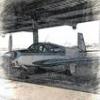Mooney in the water in Palo Alto
-
Members Online
- midlifeflyer
- ZMERC
- jlunseth
- Texas Mooney
- McMooney
- Bolter
- Schllc
- Ragsf15e
- FlyingDude
- Bike_rider
- Planegary
- dvk
- salty
- IvanP
- 802flyer
- siouxpilot77
- Kathy
- LANCECASPER
- Seth Miller
- Scottknoll
- GeeBee
- MikeOH
- Stubby
- natdm
- Parker_Woodruff
- Sue Bon
- MattD89
- mooneyflyfast
- tbone40x
- M20S Driver
- PeteMc
- Shadrach
- mariosmt
- Florian Guthardt
- rahill
- exM20K


Recommended Posts
Join the conversation
You can post now and register later. If you have an account, sign in now to post with your account.